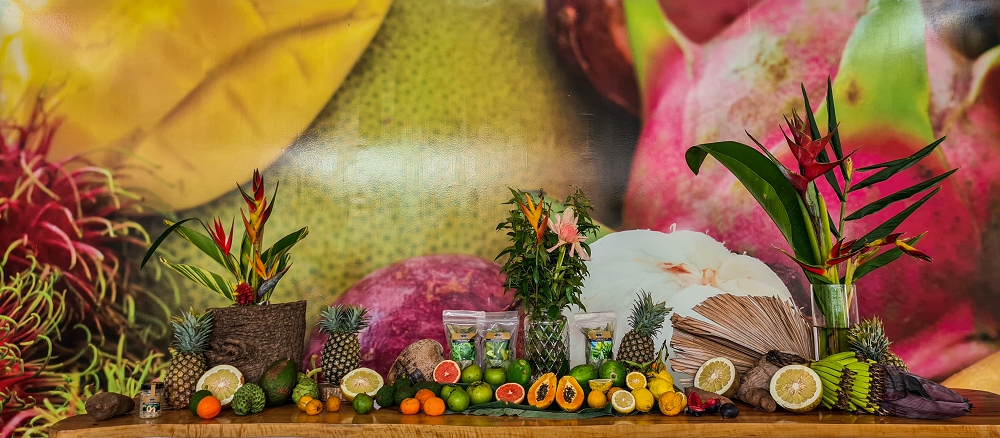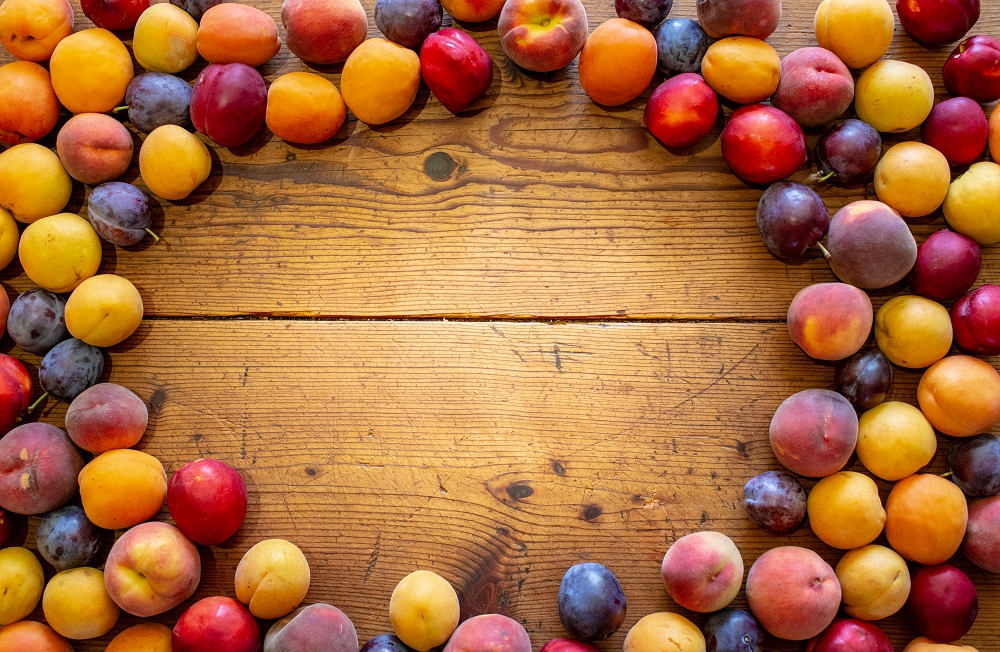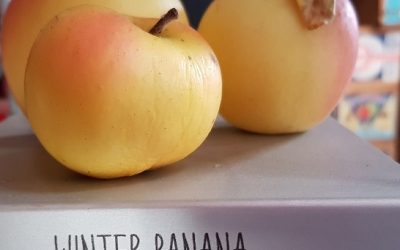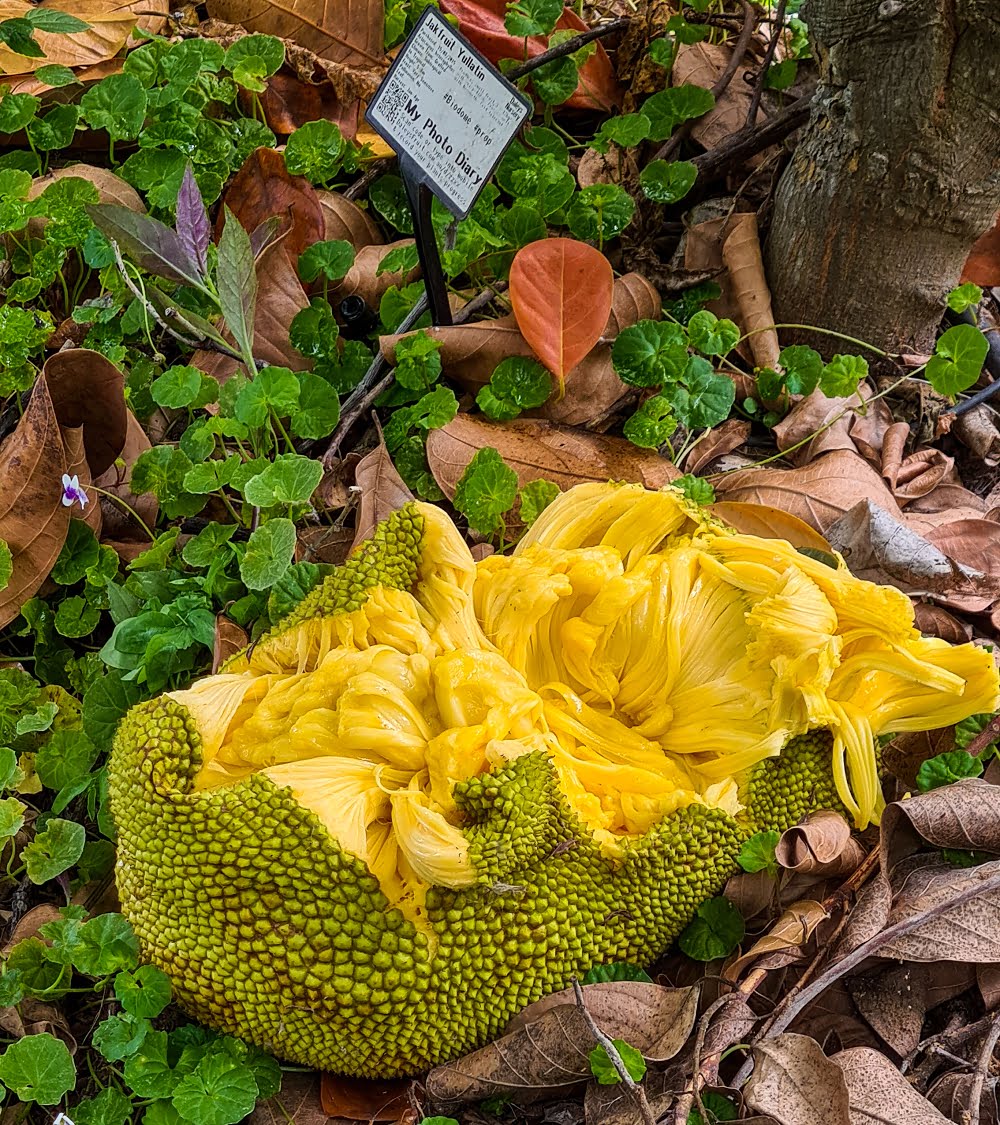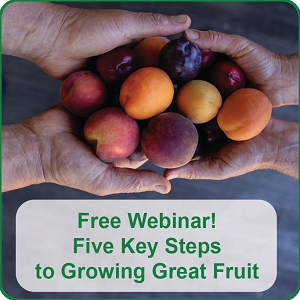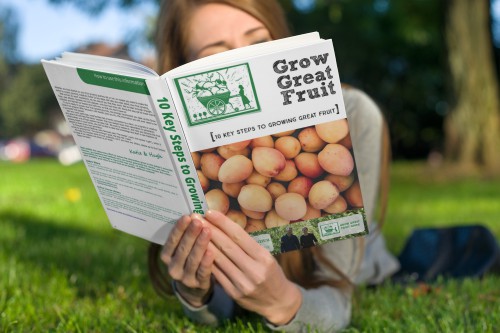Estimated reading time: 13 minutes
If you’re like us, getting to see more than 500 varieties of tropical fruit on one farm is irresistible, right? That’s the promise at Tropical Fruit World, near Tweed Heads in Bundjalung country in northern NSW.
Whenever we travel, we invariably find ourselves attracted to fruit. Roadside stalls, orchards, and farmers’ markets draw us in like moths to a flame.
We’re also a bit obsessed with tropical fruit, probably because we can’t grow it at our place so it seems exotic to us.
So when we found ourselves in northern NSW, the idea of all that lush fruity diversity in one place had us hooked.
Fruit tastings and an on-site fruit market were further compelling reasons to visit. We just hoped we’d get the chance to ask some detailed questions about how they grow all that amazing fruit.
So much to see and taste! So much to learn!!
The beginnings of Tropical Fruit World
The property was bought as a run-down farm in 1972 by Bob and Valorie Brinsmead. They originally planted mainly avocados, and in fact, first opened to the public as ‘Avocadoland’ in 1983.
Originally the property was a tropical fruit research station, focusing on macadamia nuts, Maca integrifolia, an indigenous indicator plant native to the area.
Plantings expanded to include orchards of custard apples, bananas, mangos, lychees, guavas, macadamias, and papaya…and then just kept expanding.
Over the years it has morphed into Tropical Fruit World, and now has 23,000 trees. The orchards are watered with a dauntingly long 40 km of irrigation pipe using irrigation water taken from 5 deep wells on the property which tap the aquifer.
Despite its slick tourist offerings, it’s still a working farm. Unfortunately, (but completely understandably) that means you can’t just wander around.
Luckily, they offer guided tours.
Touristy tours are not usually our thing. But if getting on a tourist train with 50 or so other people was the only way we were going to get close to the orchards, we were definitely in.
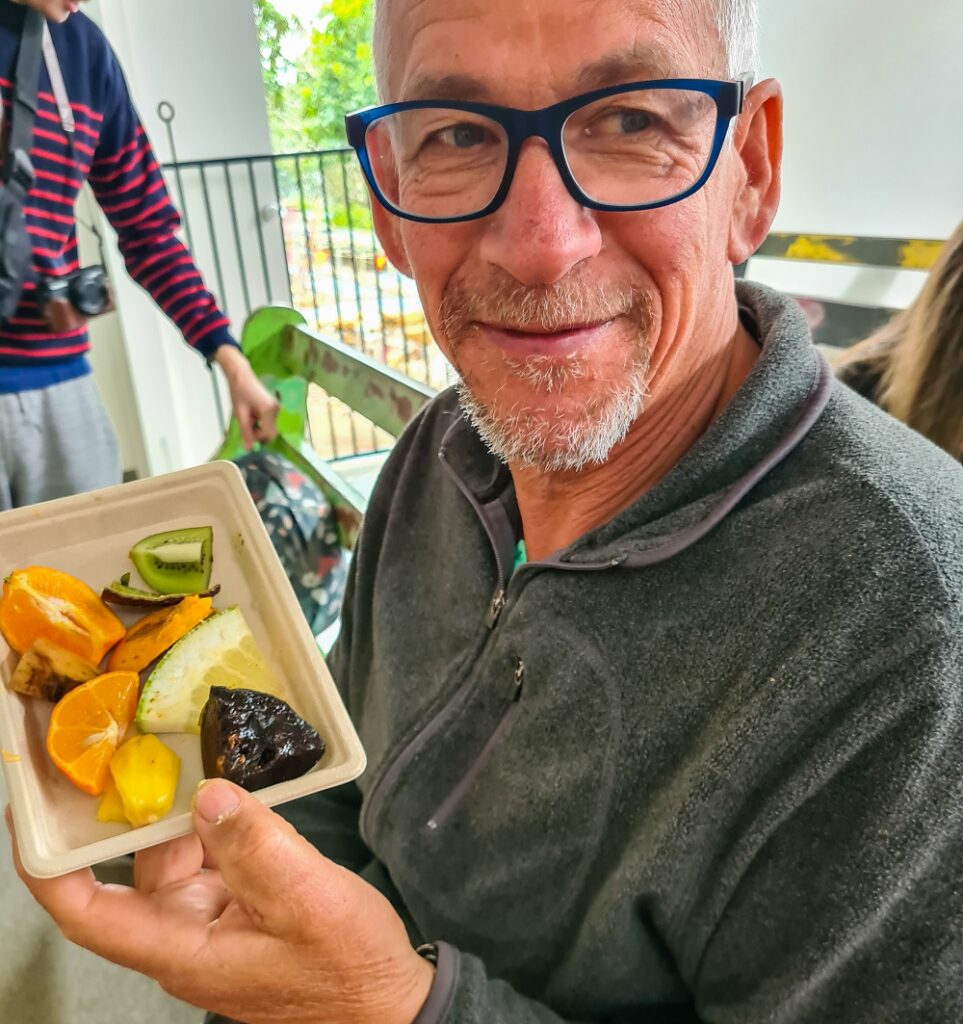
Tasting tropical fruit
The tour started at the tasting room. The diverse crowd of variously interested tourists shuffled in, and everyone found a spot on the crowded bench seats. An enthusiastic young tour guide proceeded to give the ‘spiel’ about the fruit on offer.
Eating fruit is one of our favourite things to do, and the offering even included some things we’d never tried before. Here’s what we tried, and some of the new things we learned:
Chocolate pudding fruit
- These delicious and unusual fruits ripen in late winter. Like most members of the sapote family, you need to wait until the fruit is quite soft before you eat it, but it’s worth the wait – it’s remarkable how chocolatey it tastes.
Pomelo
- Pomelo is an ancient citrus fruit originating in SE Asia that is the ancestor of oranges.
Yellow sapote
- Another member of the sapote family, this was one of the fruits we’d never heard of before. It’s also called a Canistel, or “egg fruit”. You need to wait until these fruits are quite soft before you eat them. They have the consistency of egg yolks and are reputed to help with sleep if you eat them before bedtime. We thought they were interesting, but a little bland compared to the chocolate sapote.

Avocado
- Of course, avocados are a well-known old favourite. But we didn’t realise that avocados are the most nutritional fruit in the world and avocado oil is particularly healthy. (Mamay sapote is the 2nd most nutritious fruit in the world, containing 23 vitamins and minerals.)
Yakon root
- The Yakon plant has a beautiful, daisy-like flower, but the edible part is the root. It’s also called the apple of the earth because it’s sweet and full of carbohydrate. The root can be eaten raw, chopped, or grated. Surprisingly delicious.
Rangpur lime
- Orange rather than green, these tasty but sour fruit are a cross between a mandarin orange and a citron.
Jackfruit
- We tried a ‘wet’ variety, as opposed to ‘crunchy’. It had an intense, bubblegum flavour. The fruit can become so big that it takes 2 to 3 people to harvest a single one.
- Jackfruit are the world’s biggest fruit, with the largest single recorded fruit coming in at a whopping 34 kg!
Papaya
- The papain in Papaya fruit has anti-cancer properties; you can dry and grind papaya seeds to make a healthy and peppery condiment (which is particularly tasty on avocado).
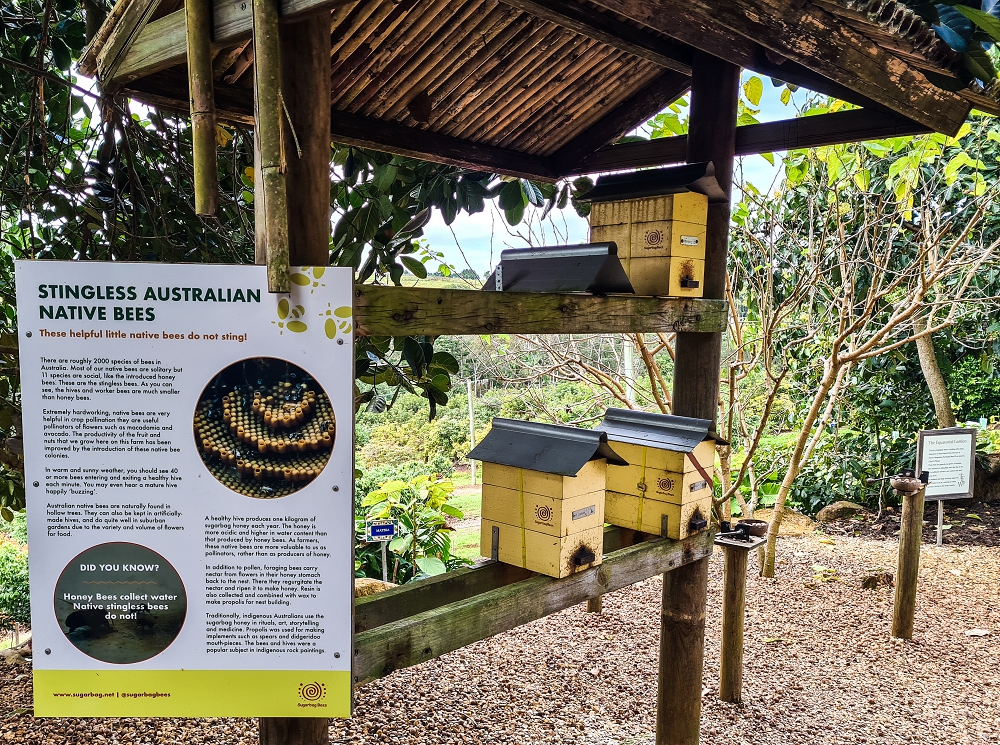

The world’s most diverse fruit farm
Tastings complete, we headed off in search of some answers about the production side of the orchard. We were loaded into an open car pulled behind a tractor to see the farm.
Our driver and tour guide introduced himself as Andrew. His deep knowledge of the property became apparent as he delivered a running commentary about the property while driving us through the orchards.
He shared that this part of the world has 6 seasons. The owners see the farm as part of the surrounding ecosystem, not just a production farm.
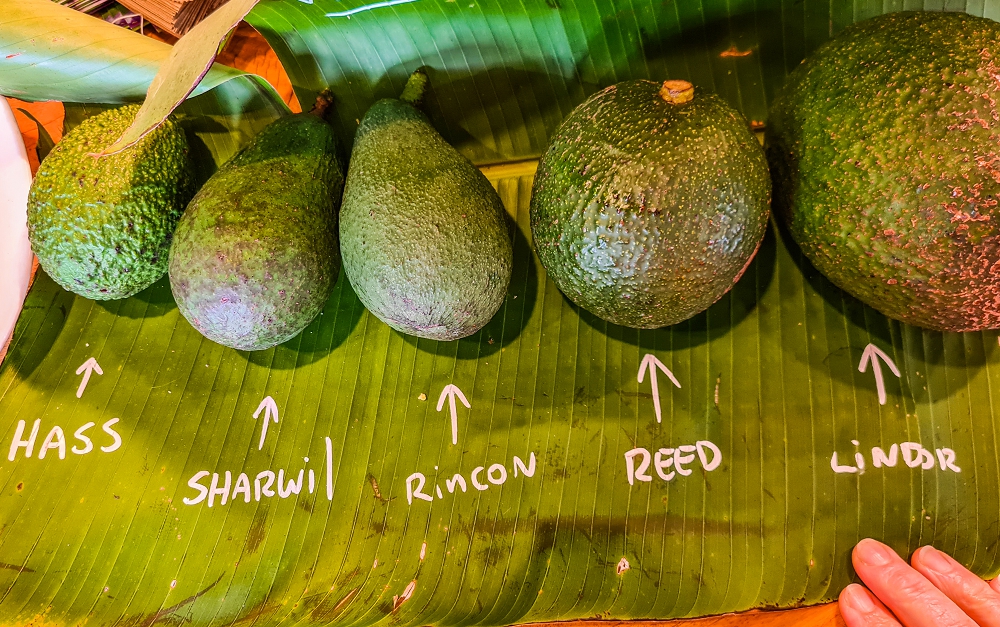
The tractor whizzed past dozens of varieties of avocado, lychee, mango, and longan. Interesting facts and beautiful trees – many laden with fruit – flashed past, too quickly to properly register.
We tried taking notes, craning out of the car to get a better look, and taking photos, but quickly realised that wasn’t going to work.
Resigned, we settled back to just soak in the atmosphere and enjoy listening to the very knowledgeable commentary.
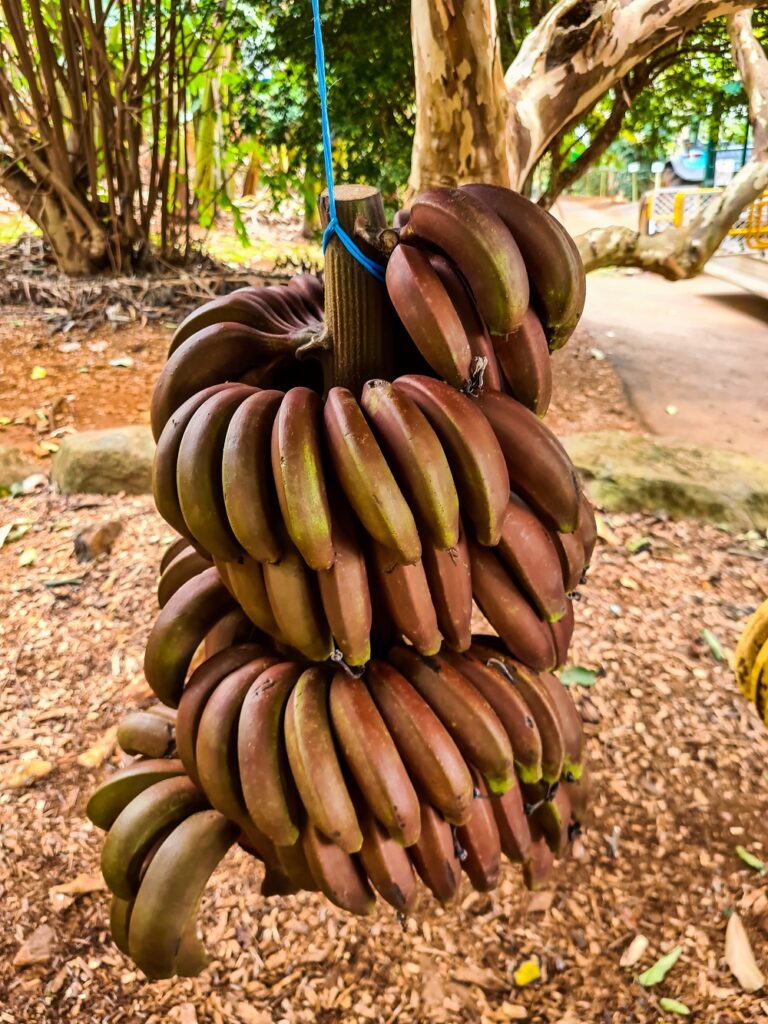
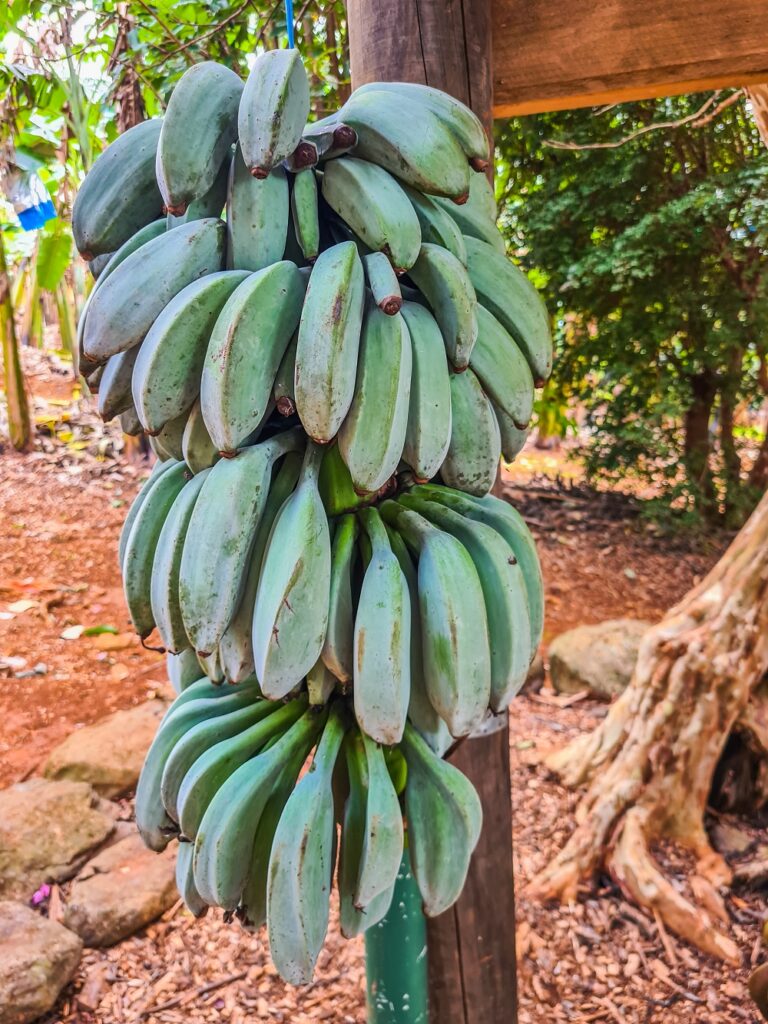
Getting up close and personal to the tropical orchards
After a quick 10-minute whiz through the orchards, things suddenly got a bit more hands-on.
The train slowed and pulled up next to some banana and macadamia trees. We dismounted while Andrew told us about the different varieties on offer and invited us to help ourselves.
We pounced while we had the opportunity to learn more about the production side of the farm. The tourist experience is great (and yes, we enjoyed getting our fill of fresh macadamias), but what we really wanted to know is what’s actually involved in running an orchard this diverse?
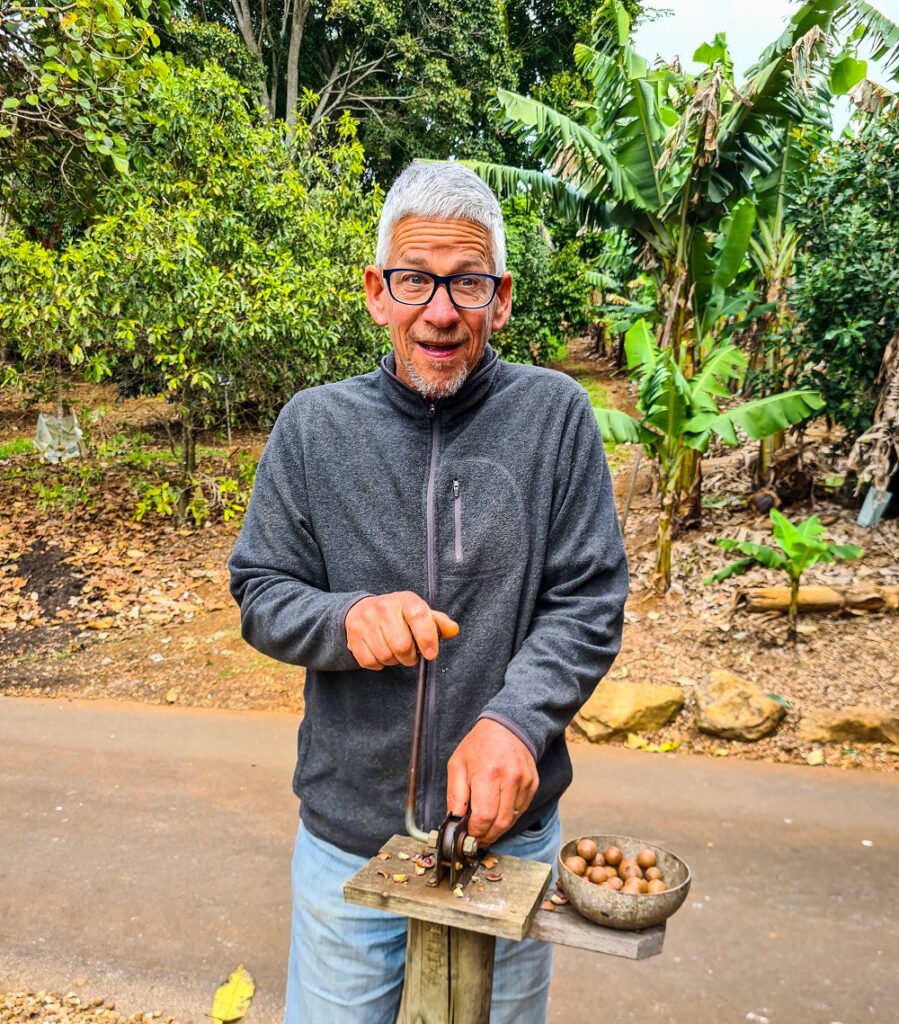
The reality of growing more than 500 varieties on a single farm
Did we mention we’re very passionate about tropical fruit (hence this very long blog post, ha ha 😅). One of the aspects that appeals is how much they can add to your biodiversity.
Tropical Fruit World is run on biological principles with a focus on biodiversity. While some chemicals are still used, they make and apply their own compost, and use organic inputs such as seaweed and minerals.
The diversity of crops makes for an extremely complex production schedule. According to Andrew, crops are not always fully picked as the production team just can’t keep up.

But biodiversity also brings many benefits, like helping to prevent the typical pest build-ups that are common in monocultural orchards.
We were anticipating that Queensland Fruit Fly (QFF) would be a major problem, but in fact, it’s quite manageable. They don’t spray for it at all, but they do net vulnerable crops like mulberries.
The farm acts as a research facility and is currently collaborating with a consortium of universities in an attempt to develop a more effective female QFF trap.
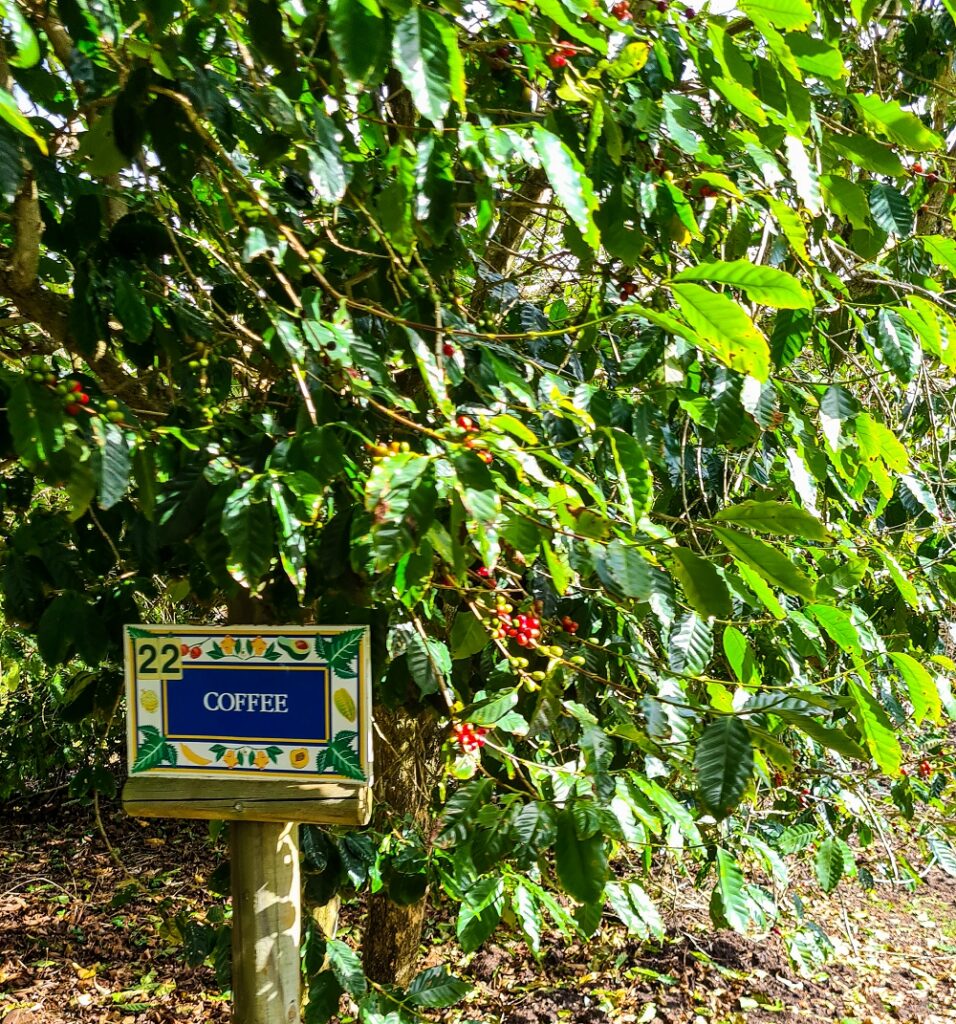
The diversity of crops
Andrew was also able to give us a clearer picture of the breadth of fruit the farm grows. Apart from the staple avocado trees, one of the main crops is the Anona family, which includes custard apples. They have a total of 4000 trees across 19 varieties. Usually, they pick custard apples for 9 months of the year, however, last year they picked fruit for a full 12 months. This is unheard of, and something Andrew put down to the changing climate.
Other major commercial crops include 45 different mango varieties, lychees, coffee, mangosteens including the purple mangosteen, and many different banana varieties, including Blue Java and Red Dakka.
The number of fruit varieties is constantly growing, and nobody seems quite sure how many varieties are currently grown (we heard 500 and 700 from various people along the way).
Tropical Fruit World has a dedicated fruit “finder” who researches tropical fruit varieties and brings them to the farm to be included in the collection.
This makes it exciting for fruit-o-philes like us, but also worthy of a visit at any time of year because there’s always something in season!
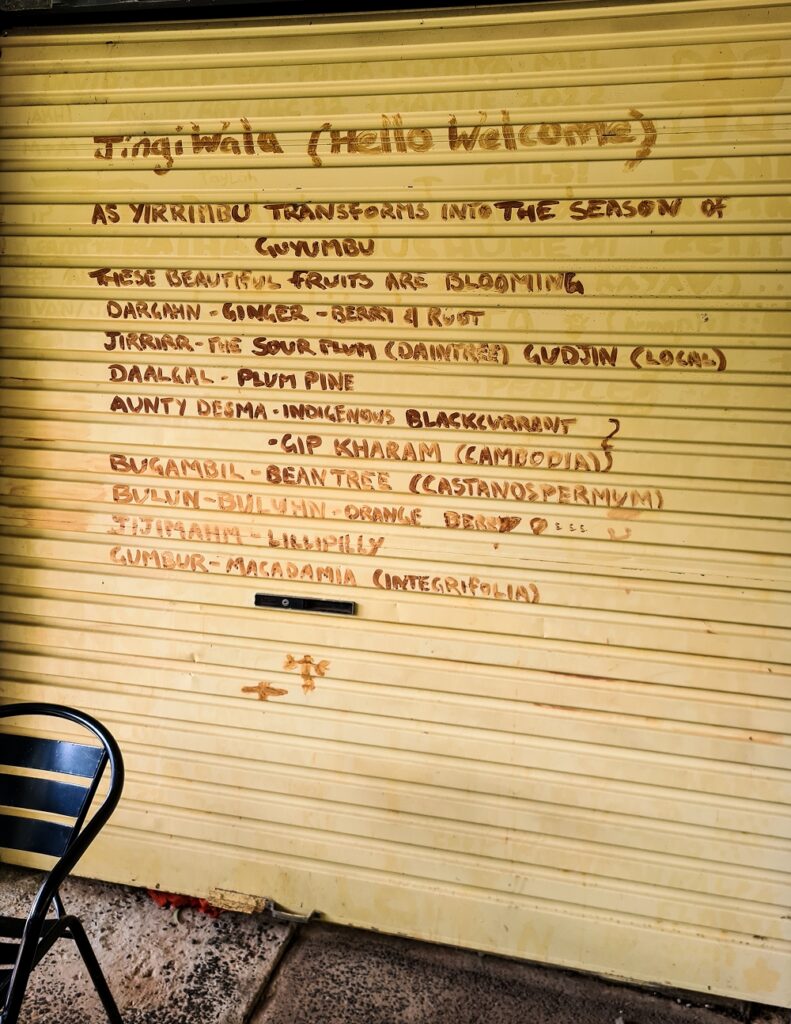
Connecting the farm to the original inhabitants
We were pleased to find that the farm not only acknowledged the traditional owners of the land on which it operates but also aims to connect visitors with native foods from the region.
Having a multicultural audience is the perfect opportunity to educate people about how multicultural Australia has always been.
For thousands of years Australia had hundreds of aboriginal nations, each with their own culture and language. Colonisation and the Frontier Wars largely destroyed, fragmented, and scattered them.
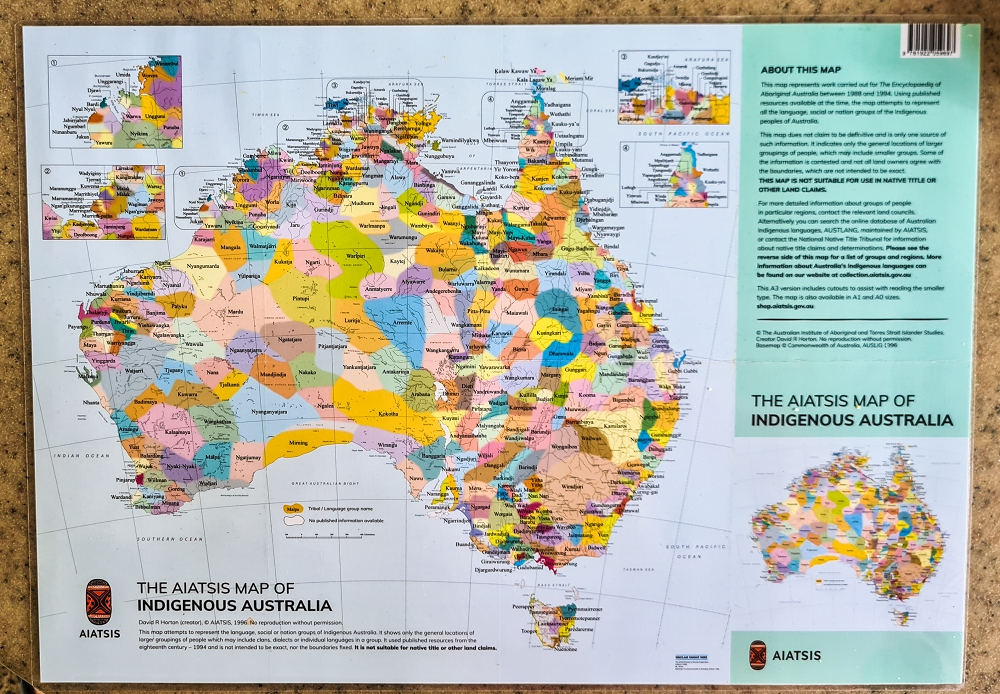
We spent the last part of the tour learning about native food and fibre plants, many of which are also grown on the farm alongside the commercial crops.
It was a particularly treat to see the native Davidson’s plums which were in season when we were there. They look like a smallish traditional Japanese-type plum from the outside, but have the most incredibly vibrant pink flesh.
Known to be fabulously healthy fruits, they’re also almost inedibly sour. However, we indulged in some jam from the gift shop on our way out and can report that the addition of a bit of sugar creates one of the most delicious jams we’ve ever tried!
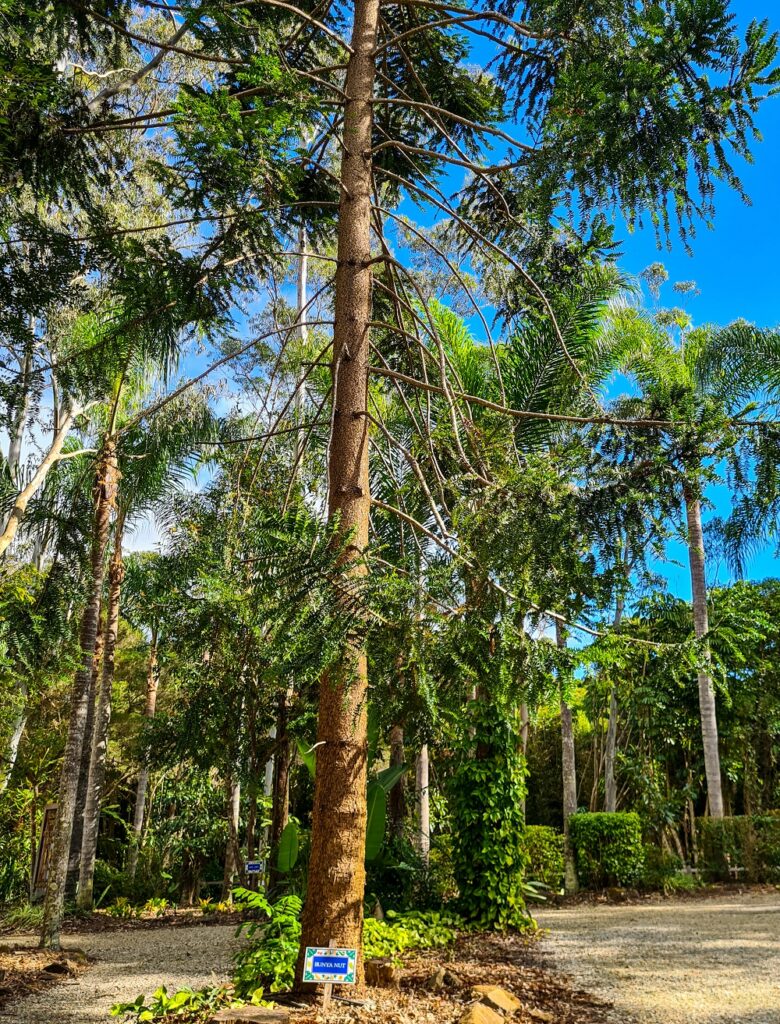
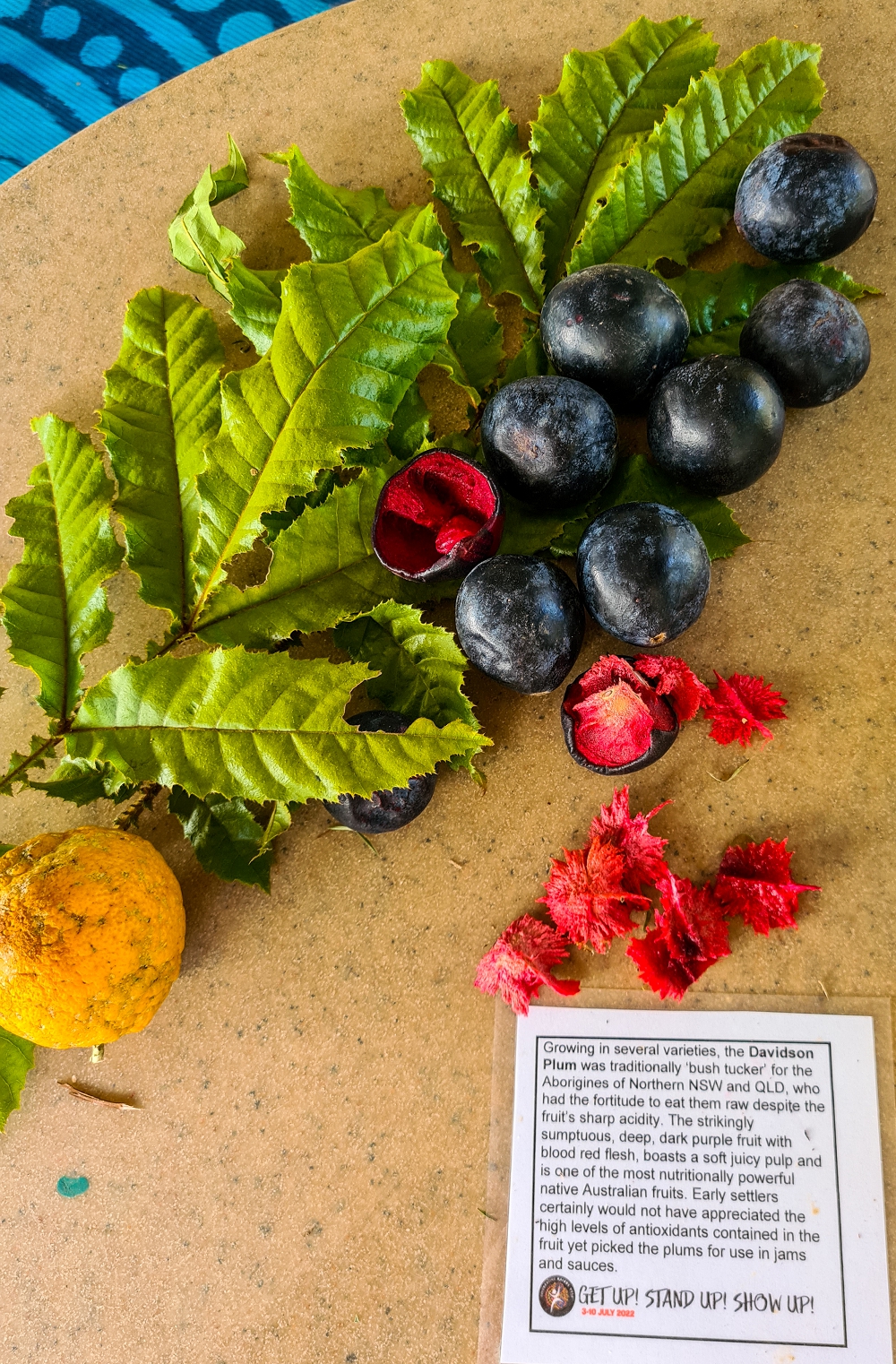



We’ve seen a lot of working farms in our time as growers. And we’ve visited a lot of tourist attractions, particularly if they offer anything horticultural.
It’s rare to see an example where they do both so well. It’s fascinating to see farms like Tropical Fruit World who have repositioned themselves to offer a meaningful tourist experience, while at the same time maintaining operations as a working farm.
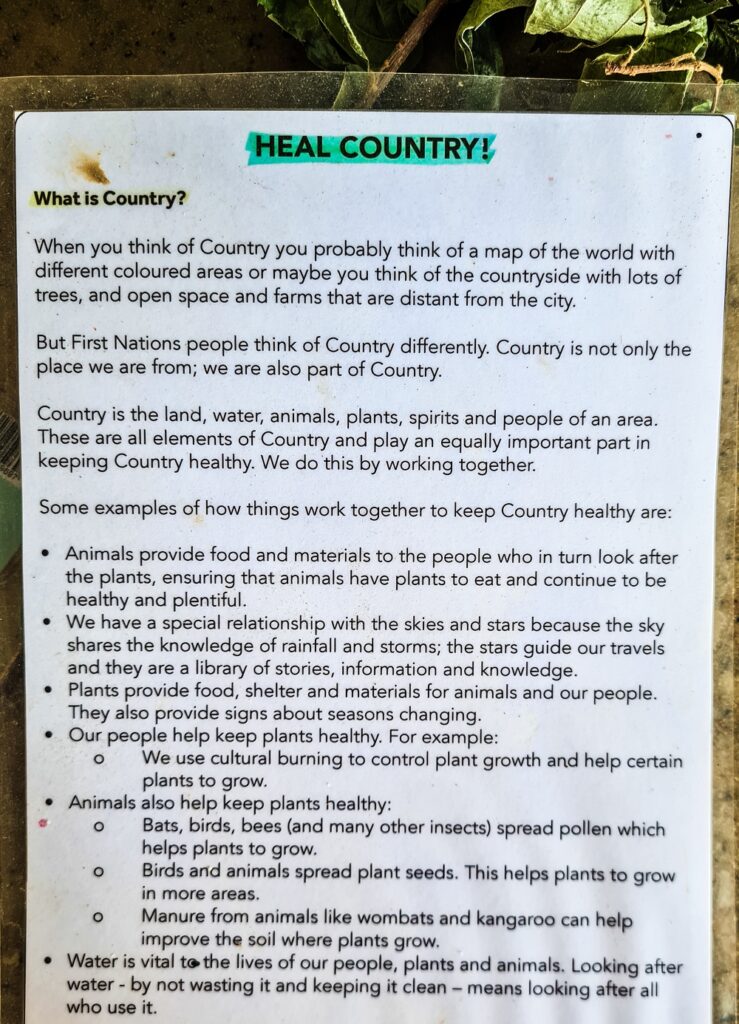
We particularly loved the call to “heal country”.
No matter how big your farm or small your garden is, for us this was the perfect reminder of how to think about our gardens, farms, and landscapes – the places we live, and grow food.
Related Articles
How can you get support for a community orchard?
Find out how to access resources and support to start a community orchard and build food security and resilience.
Discover heritage apple trees you’ve never heard of
There are hundreds of heritage apple trees you’ve probably never heard of. We’re aiming to bring as many as possible back into fashion.
Tips for growing subtropical fruit
Sub-tropical fruit trees include dozens of exotic and interesting varieties that can expand the diversity in your garden.

